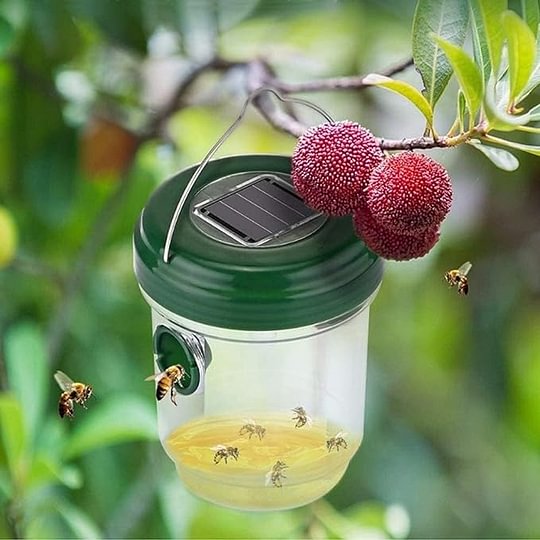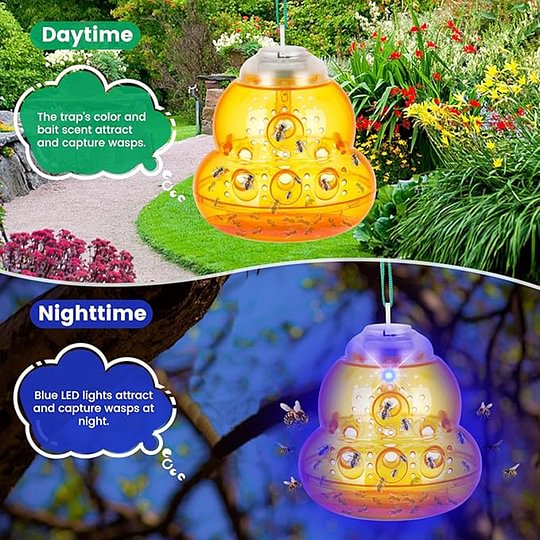If you love your garden but find yourself battling the relentless invasion of carpenter bees, you're not alone. These buzzing insects can cause significant damage to wooden structures and plants, leaving many gardeners searching for effective ways to protect their outdoor spaces. While some may resort to chemical solutions or professional pest control, a more eco-friendly and satisfying approach is crafting your own traps.
In this article, we will explore the art of building DIY carpenter bee traps that can not only safeguard your garden but also provide an engaging project for your weekends. With Carpenter Bee Traps in America and steps, you can create traps that are not only effective but also a testament to your ingenuity and care for the environment. Let’s dive into the world of carpenter bee traps DIY, where creativity meets pest control.
Materials Needed for DIY Bee Traps
To create effective carpenter bee traps, you will need a few essential materials. Begin with wood, as carpenter bees are attracted to untreated softwoods like pine and cedar. A simple wooden block or small wooden logs can serve as the foundation for your trap. Make sure the wood is clean and free of any chemicals that might repel the bees. You might also want to choose wood that has been left to weather naturally, as this will add more appeal for the bees.

Next, you will need some basic tools to construct the traps. A drill is essential for creating holes in the wood, which will mimic the entrance to a nesting site. A saw may be required if you need to cut your wooden pieces to size. Additionally, having screws or nails on hand will help secure any components of the trap together. You may also consider using a measuring tape and a pencil for accurate measurements and markings to ensure everything fits together properly.
Finally, consider including non-toxic bait to attract the carpenter bees to the trap. Common options include a mixture of sugar water or a small amount of fruit juice, which can be placed inside the trap to lure them in. You may also want to incorporate a container or jar that can hold this bait and is easily attachable to your wooden structure. Gathering all these materials ahead of time will streamline the building process and help you create effective traps for your garden.
Step-by-Step Guide to Building Traps
To start building your DIY carpenter bee trap, gather the necessary materials: a wooden block, a small container, some wood screws, and a piece of plastic tubing. The wooden block should be at least six inches long, four inches wide, and two inches thick. Begin by drilling a hole into the center of the block, ensuring it is wide enough for carpenter bees to enter, generally around half an inch in diameter. The hole should go about two inches deep, creating a safe entry point for the bees without allowing them to easily escape.
Next, attach the small container to the bottom of the wooden block. This container will serve as a bait holder to attract the carpenter bees. Make sure it is secure and can collect any bees that enter the trap. You can fill the container with a mixture of sugar water or fruit juice to entice the bees. Once the container is fixed in place, you may want to cover the top of the block with a lid to further prevent the bees from escaping.

After assembling the trap, it's time to think about placement. Hang or mount your trap in areas where you've noticed carpenter bee activity, ideally near wood surfaces that they like to tunnel into. The trap should be positioned away from direct sunlight but in a location that receives some morning light, as this can draw the bees in. Regularly check the trap to remove any caught bees and replenish the bait to maintain its effectiveness.
Effective Placement and Maintenance Tips
To maximize the effectiveness of your DIY carpenter bee traps, strategic placement is key. Ideally, these traps should be hung in locations where carpenter bees are most active, such as near wooden structures, fences, or garden areas. Installing traps at eye level and close to the areas where you've noticed bee activity can significantly increase your chances of capturing them. It’s also advisable to place multiple traps around your garden to create a wider coverage zone, as this can help lure bees away from vulnerable wood surfaces.
Maintenance is crucial to ensure your traps remain effective throughout the season. Regularly check your traps at least once a week during peak bee activity periods, typically in the spring and early summer. Empty the traps of captured bees and any debris to prevent blockages that could diminish their effectiveness. Cleaning the traps with warm, soapy water can also help maintain their efficiency. If the trap's entrance holes become damaged or clogged, be sure to repair or replace them promptly.
Finally, consider the use of natural attractants to enhance your DIY traps. A mixture of certain essential oils, like mint or citrus, can entice carpenter bees into your traps while also providing a pleasant scent in your garden. Additionally, positioning traps in sunny spots can attract more bees, as they tend to favor warm areas. By combining proper placement, routine maintenance, and thoughtful attractants, your DIY carpenter bee traps will safeguard your garden effectively.
